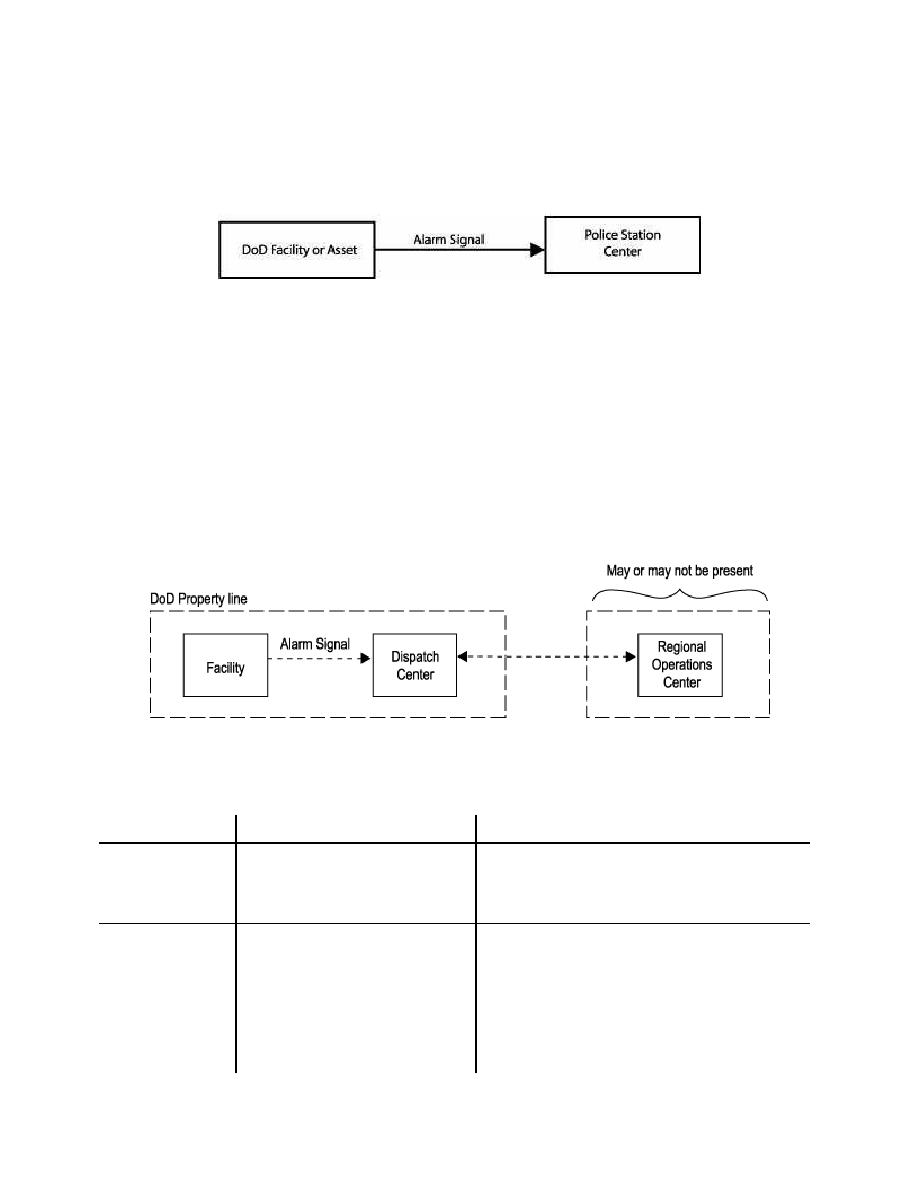
UFC 4-021-02NF
27 September 2006
change 1, 23 October 2006
connection configuration, include medical clinics, base exchanges, commissaries, and
Reserve Centers. Refer to Figure 2-11 for a diagram of a police station connection.
Figure 2-11. Police Connection Monitoring
2-5.5
Proprietary Station. This system is similar to a central station operation,
except that ESS monitoring or recording equipment for all ESS at the installation is
located within a constantly-staffed Dispatch Center on an owner's property. Proprietary
stations are prominent throughout DoD installations where Dispatch Centers are owned,
maintained, and staffed by DoD personnel, who comprise the response force. The
installation security force responds to all ESS alarms. As a basic configuration, the
Dispatch Center may be centrally located at an installation. Two possible configurations
of a Proprietary Station Dispatch Center are shown in Figure 2-12: a Dispatch Center
centrally located at a base and an alternative configuration is a detached Regional
Dispatch Center (RDC).
Figure 2-12. Proprietary Station Monitoring
2-5.6
Summary. Table 2-3 provides a summary of the pros and cons of each type
of monitoring station method.
Table 2-3 Pros and Cons of Monitoring Methods
Pros
Cons
Easy to implement
No guaranteed response, relies on
Local Alarm
support forces being in audible/visual
Station
Cost effective
range
Simple
Does not require any
Requires an existing Central Station
Centralized
additional space or building
Station
Some complexity in establishing
Probably does not require
connection
any additional staffing
May rely on non-DoD forces
CCTV capability may be limited or non-
existent
22


 Previous Page
Previous Page
